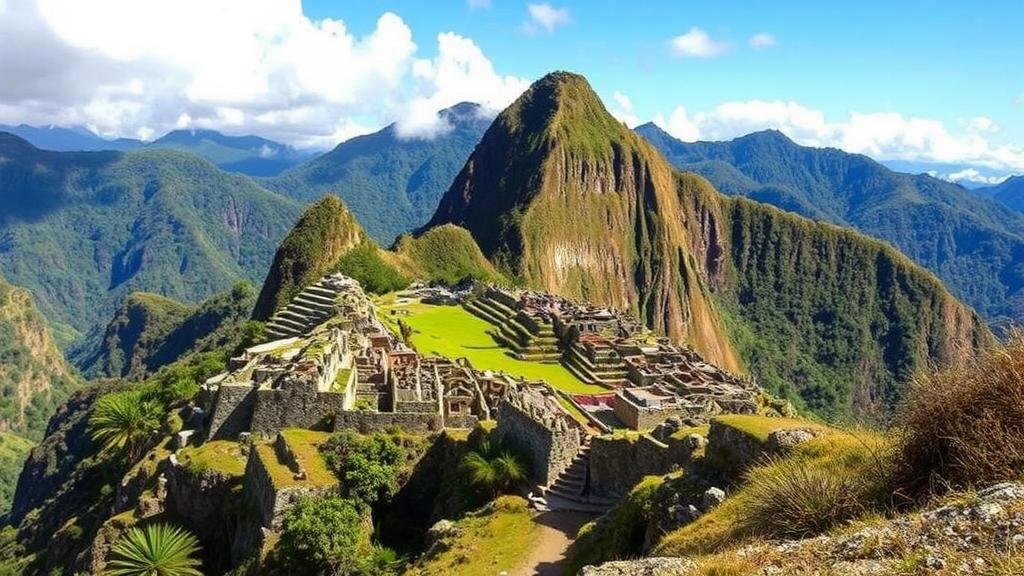Exploring the ruins of pre-Columbian hilltop cities in Ecuador’s Andes.
Exploring the Ruins of Pre-Columbian Hilltop Cities in Ecuador’s Andes
Ecuadors Andes mountains are not just a breathtaking natural wonder; they are also a treasure trove of pre-Columbian history. Among the peaks and valleys lie the remnants of ancient hilltop cities, which encompassed the cultures of the Inca and their predecessors. This articles delves into the significance of these ruins, their historical context, and what visitors can expect when exploring these fascinating sites.
A Glimpse into History
The pre-Columbian era in Ecuador dates back to over 10,000 years ago, with various cultures evolving over millennia. most prominent of these cultures was the Inca Empire, which reached its zenith in the 15th century, around 1470 AD, before the Spanish conquest. While the Incas are known for their remarkable architectural feats like Machu Picchu, Ecuador also boasts a variety of lesser-known but equally fascinating hilltop cities.
Major Hilltop Sites to Explore
Travelers seeking to unravel the mysteries of these ancient civilizations can visit several key archaeological sites in Ecuadors Andes:
- Coangos: Located in the province of Azuay, Coangos was believed to be a ceremonial site characterized by its stone walls and terraces, dating back to around 1500 BC.
- Ingapirca: The largest known Inca archaeological site in Ecuador, Ingapirca features ruins that date back to the 15th century, complete with a temple, a significant plaza, and sophisticated stonework, demonstrating Inca engineering prowess.
- Rumiñahui: Just outside of Quito, these ruins date back to the late Tahuantinsuyo period. The site is rich in petroglyphs, indicating complex social structures and rituals.
- Chiriboga: A lesser-explored site, Chiriboga showcases well-preserved vestiges of the ancient civilizations settlement patterns and is an excellent place for archaeological study.
Cultural Significance of the Hilltop Cities
The hilltop cities were not merely functional but also held deep cultural significance. Most of them served as religious or ceremonial centers where communities gathered to perform rituals related to agricultural cycles and honor their deities. For example, the Temple of the Sun in Ingapirca was a key site for solstice celebrations, marking the changing seasons crucial for farming.
Also, the strategic placement of these cities on hilltops allowed for natural fortification against potential invaders, showcasing the foresight of these ancient peoples. Their cities were intricately designed, featuring terraces for agriculture, water management systems, and pathways that displayed advanced civil engineering principles.
Modern-Day Exploration
Today, visiting these ruins offers not just a glimpse into the past, but also an opportunity for cultural exchange. Most sites are accessible by day trips from major cities like Quito and Cuenca, attracting both tourists and scholars. Tour guides often provide context about the daily lives, belief systems, and societal structures of the civilizations that once thrived there.
For example, when you visit Ingapirca, you can witness the blending of Cañari and Inca cultures through the architecture, art, and archaeological finds. The site is well-maintained, with informative signage in both Spanish and English, making it accessible to a diverse audience.
Preserving the Heritage
Efforts are underway to preserve these historical sites amidst threats such as urban development and tourism impact. UNESCO and local governments have initiated programs to protect these treasures while promoting sustainable tourism practices. It is essential for visitors to tread lightly and respect the rich history embedded in these ruins.
Conclusion: Engage with Ecuador’s Living History
Exploring the pre-Columbian hilltop cities in Ecuadors Andes is not only an adventure into breathtaking landscapes but also a profound engagement with the remnants of ancient cultures. Visitors can immerse themselves in a period filled with rich histories and complex societies, leaving with a deeper understanding of Ecuador’s cultural foundation.
For those planning to explore these ruins, here are some actionable takeaways:
- Consider hiring a local guide to enhance your understanding of the sites.
- Plan visits during the dry season (June to September) for optimal weather.
- Bring hiking shoes, plenty of water, and a sense of curiosity.
Embark on a journey through time and witness the legacy of those who once called the Andes home.


